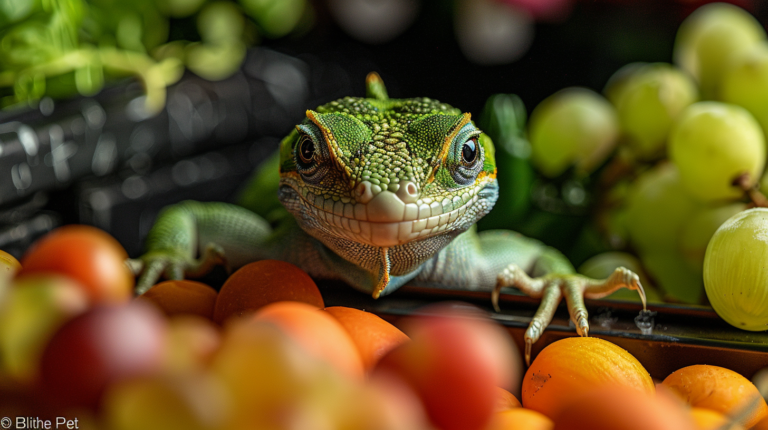Discover 7 easy homemade dog treats your pup will love! These nutritious recipes use simple ingredients for healthy, preservative-free alternatives to store-bought options.
Table of Contents
Making homemade dog treats is a wonderful way to ensure your furry friend enjoys healthy, preservative-free snacks while allowing you to control exactly what goes into their diet. With rising concerns about commercial pet food quality and recalls, more pet parents are turning to homemade dog treats as a safe, nutritious alternative. According to a 2024 American Pet Products Association survey, 67% of dog owners are now more conscious about the ingredients in their pets’ food and treats than they were five years ago.
Creating your own homemade dog treats isn’t just economical—it’s an act of love that can strengthen the bond between you and your canine companion. Whether your dog has specific dietary needs, allergies, or you simply want to provide them with the best possible nutrition, these seven easy homemade dog treat recipes are the perfect place to start.
In this comprehensive guide, we’ll explore a variety of simple yet nutritious homemade dog treats that cater to different dietary requirements and preferences. From grain-free options to treats specifically designed for senior dogs or puppies, you’ll find recipes that will have your four-legged friend’s tail wagging with excitement. Plus, we’ll share expert tips on ingredient selection, storage methods, and portion control to ensure your homemade creations are as safe as they are delicious.
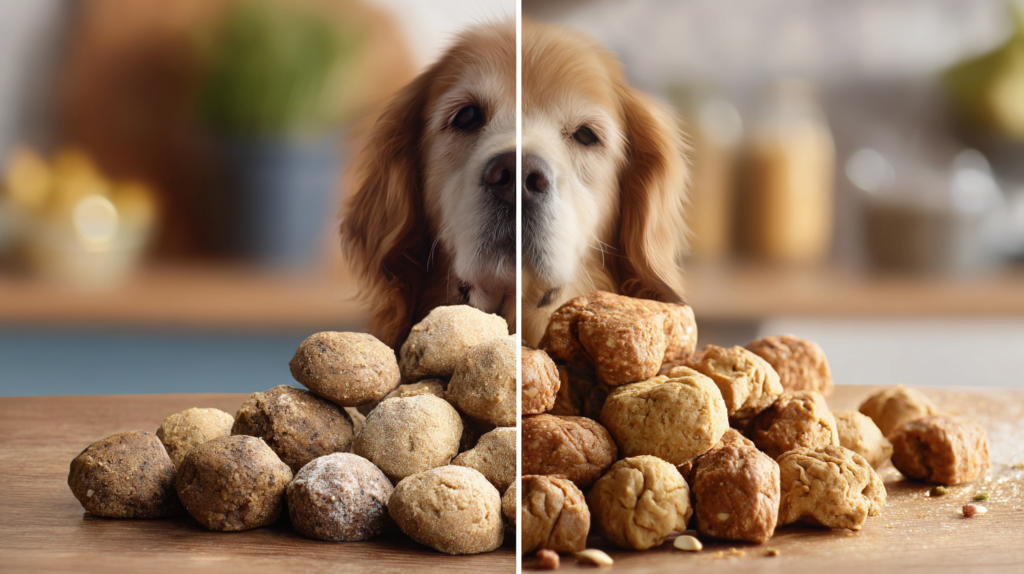
Why Choose Homemade Dog Treats?
Before diving into our delicious recipes, let’s understand why making homemade dog treats is worth the effort:
Health Benefits of Homemade Dog Treats
Preparing homemade dog treats gives you complete control over what goes into your pet’s body. According to Dr. Sarah Johnson, DVM and veterinary nutritionist, “Homemade treats allow pet owners to avoid artificial preservatives, colors, and flavors that may cause allergic reactions or digestive issues in sensitive dogs.”
Some key benefits include:
- No artificial preservatives – Commercial treats often contain chemicals like BHA, BHT, and ethoxyquin to extend shelf life
- Reduced allergen exposure – You can exclude common allergens like wheat, soy, or dairy
- Customized nutrition – Tailor treats to your dog’s specific health needs
- Fresher ingredients – Higher quality and nutrient retention than long-shelf-life products
- Controlled calorie content – Better management of your dog’s weight and diet
Cost-Effectiveness
While premium-quality commercial dog treats can be expensive, homemade versions typically cost 40-60% less. A 2023 study by the Pet Nutrition Alliance found that homemade dog treats cost an average of $0.10-$0.25 per treat, compared to $0.30-$0.75 for premium store-bought alternatives.
Bonding Experience
Making homemade dog treats can be a fun activity that strengthens your relationship with your pet. Dogs can sense when something is made especially for them, and the process of creating treats can become a special ritual that you both enjoy.
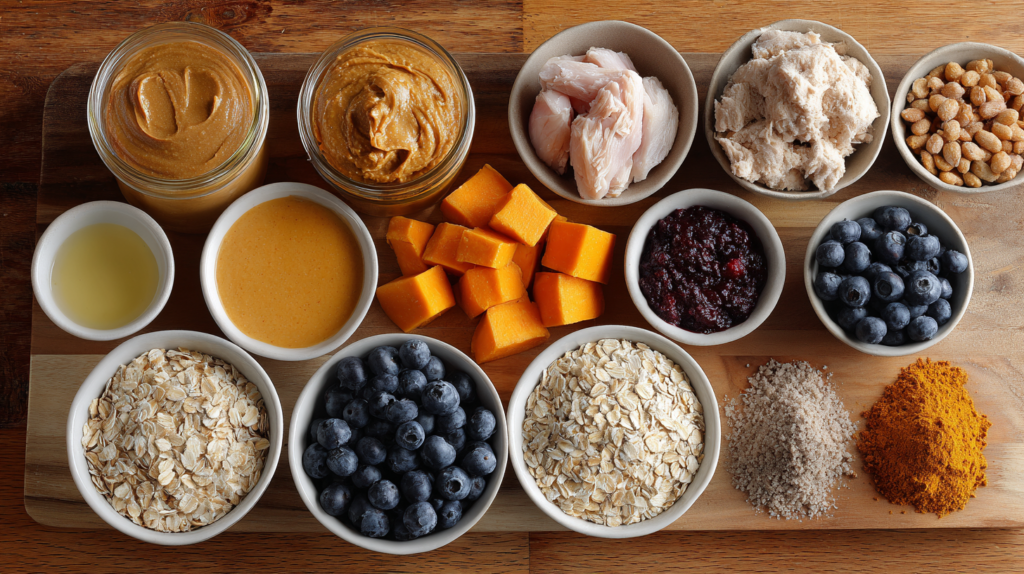
Essential Ingredients for Homemade Dog Treats
Before starting any recipe, it’s important to understand which ingredients are safe and beneficial for dogs and which should be avoided.
Dog-Friendly Ingredients
| Ingredient | Benefits | Best For |
| Pumpkin | Fiber, vitamins A & C, helps digestion | Digestive health, weight management |
| Peanut Butter (xylitol-free) | Protein, healthy fats, vitamin B | Energy, coat health |
| Oats | Fiber, minerals, low gluten | Sensitive stomachs, steady energy |
| Sweet Potato | Vitamins A, C & B6, fiber | Immune support, digestive health |
| Carrots | Beta-carotene, fiber, dental health | Eye health, low-calorie treats |
| Plain Greek Yogurt | Probiotics, protein, calcium | Digestive health, strong bones |
| Coconut Oil | Medium-chain fatty acids, antimicrobial | Skin & coat health, immune support |
| Eggs | Complete protein, biotin | Skin & coat health, muscle development |
| Blueberries | Antioxidants, vitamins | Cognitive function, immune support |
| Banana | Potassium, vitamin B6, fiber | Energy, digestive health |
Ingredients to Avoid
- Chocolate – Contains theobromine, toxic to dogs
- Xylitol – Artificial sweetener that can cause insulin release and liver failure
- Grapes/Raisins – Can cause kidney failure
- Onions/Garlic – Contains thiosulfate, damages red blood cells
- Macadamia Nuts – Can cause weakness, hyperthermia, and vomiting
- Avocado – Contains persin, which can cause vomiting and diarrhea
- Alcohol – Even small amounts can cause intoxication, coma, or death
- Caffeine – Similar effects to chocolate; can be fatal
- Salt – Excessive amounts can lead to sodium ion poisoning

Essential Kitchen Tools for Making Homemade Dog Treats
Having the right tools on hand will make preparing homemade dog treats much easier and more enjoyable:
- Silicone molds or cookie cutters (bone shapes are fun but any shape works!)
- Baking sheets with parchment paper
- Food processor or blender
- Mixing bowls in various sizes
- Measuring cups and spoons
- Airtight containers for storage
- Cooling racks
- Rolling pin (for rolled treats)
Now let’s get to the recipes!
Recipe #1: Classic Peanut Butter & Pumpkin Treats

These homemade dog treats combine the protein power of peanut butter with the digestive benefits of pumpkin for a nutritional powerhouse that dogs absolutely love.
Ingredients:
- 2½ cups whole wheat flour
- 2 eggs
- ⅔ cup pure pumpkin puree (not pumpkin pie filling)
- 3 tablespoons natural peanut butter (xylitol-free)
- ½ teaspoon cinnamon (optional)
Instructions:
- Preheat your oven to 350°F (175°C) and line a baking sheet with parchment paper.
- In a large bowl, whisk the eggs until beaten.
- Add pumpkin puree, peanut butter, and cinnamon (if using) to the eggs and mix until well combined.
- Gradually add the flour, mixing until a dough forms. If the dough is too sticky, add a bit more flour.
- Turn the dough onto a floured surface and roll to approximately ¼-inch thickness.
- Cut into desired shapes using cookie cutters.
- Place treats on the prepared baking sheet, leaving a small space between each.
- Bake for 20-25 minutes or until the edges start to golden.
- Allow treats to cool completely on a wire rack before serving.
Nutritional Benefits:
- Pumpkin: Excellent source of fiber and beta-carotene, supports digestive health
- Peanut Butter: Provides healthy fats and protein for energy and coat health
- Whole Wheat Flour: Offers complex carbohydrates and fiber
- Cinnamon: Has anti-inflammatory properties and can help regulate blood sugar
Storage:
Store in an airtight container for up to 2 weeks at room temperature or up to 3 months in the freezer.
Recipe #2: Grain-Free Sweet Potato Chews

Perfect for dogs with grain sensitivities, these simple one-ingredient homemade dog treats are packed with vitamins and have a chewy texture that pups love.
Ingredients:
- 2-3 medium sweet potatoes, washed and dried
Instructions:
- Preheat your oven to 250°F (120°C).
- Line two baking sheets with parchment paper.
- Slice sweet potatoes into ¼-inch thick rounds (for smaller dogs) or lengthwise for larger “chews” (for bigger dogs).
- Arrange slices in a single layer on the baking sheets.
- Bake for 2½ to 3 hours, flipping halfway through, until the slices are dehydrated and chewy.
- Allow to cool completely before serving.
Nutritional Benefits:
- Sweet Potatoes: Rich in dietary fiber, vitamin A, vitamin C, and beta-carotene
- Low-Fat: Excellent option for dogs on weight management plans
- Grain-Free: Suitable for dogs with grain allergies or sensitivities
Storage:
Keep in an airtight container in the refrigerator for up to 3 weeks.
Expert Tip:
Dr. Lisa Morgan, canine nutritionist, notes: “Sweet potato chews are not only nutritious but also help clean your dog’s teeth naturally due to their slightly abrasive texture when dehydrated properly.”
Recipe #3: Frozen Blueberry & Yogurt Bites
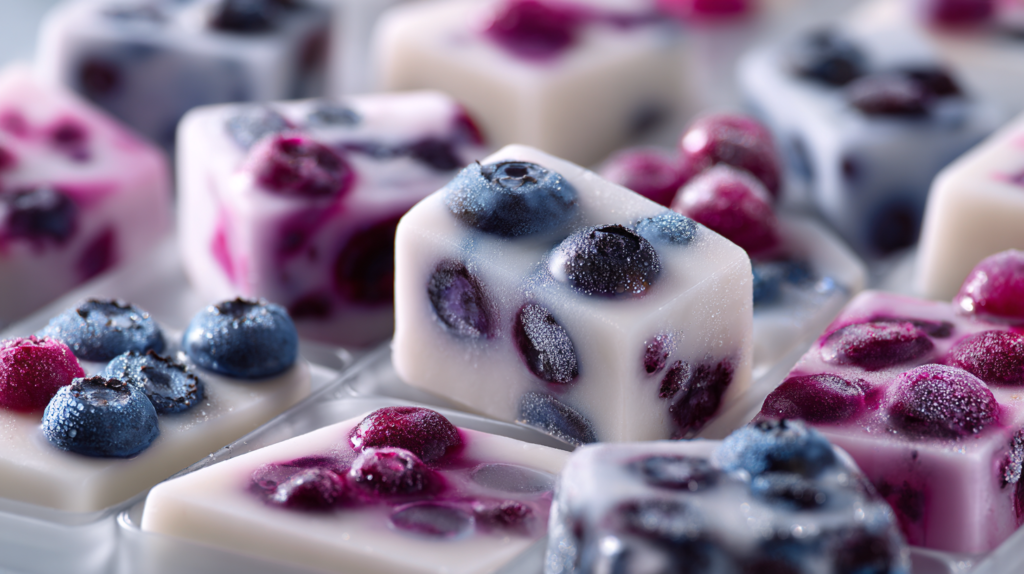
These refreshing homemade dog treats are perfect for hot summer days and provide probiotic benefits along with antioxidant-rich blueberries.
Ingredients:
- 2 cups plain, unsweetened Greek yogurt (avoid anything with artificial sweeteners)
- 1 cup fresh or frozen blueberries
- 1 tablespoon honey (optional)
Instructions:
- If using honey, mix it with the yogurt until well combined.
- Fill an ice cube tray or silicone mold halfway with the yogurt mixture.
- Add a few blueberries to each compartment.
- Top with remaining yogurt to cover the blueberries.
- Freeze for at least 4 hours or overnight.
- Pop treats out of the molds and store in a freezer bag.
Nutritional Benefits:
- Greek Yogurt: Contains probiotics that support gut health and calcium for strong bones
- Blueberries: Packed with antioxidants that help fight inflammation and support cognitive function
- Honey: Provides natural sweetness and contains antimicrobial properties (use sparingly)
Storage:
Keep frozen for up to 3 months.
Serving Suggestion:
These frozen homemade dog treats are perfect for summer but should be given outdoors or on a washable surface to prevent melting messes.
Recipe #4: Chicken & Vegetable Training Treats

These small, high-value homemade dog treats are perfect for training sessions due to their enticing aroma and convenient size.
Ingredients:
- 1 pound boneless, skinless chicken breast, cooked and finely diced or shredded
- 1 cup cooked vegetables (carrots, green beans, peas – finely chopped)
- 2 eggs, beaten
- 1 cup whole wheat flour or oat flour
- ¼ cup chicken broth (low-sodium)
- 1 tablespoon olive oil
Instructions:
- Preheat your oven to 350°F (175°C) and line a baking sheet with parchment paper.
- In a food processor, pulse the cooked chicken and vegetables until finely chopped.
- Transfer the mixture to a large bowl and add the beaten eggs, olive oil, and chicken broth.
- Gradually add the flour, mixing until a dough forms.
- Press the dough onto the prepared baking sheet, creating a layer about ¼-inch thick.
- Score the dough with a knife or pizza cutter to create small squares (approximately ½-inch).
- Bake for 20-25 minutes until edges are golden and treats are firm.
- Allow to cool completely, then break along score lines into small squares.
Nutritional Benefits:
- Chicken: Excellent source of lean protein
- Vegetables: Provide vitamins, minerals, and fiber
- Eggs: Contain biotin for healthy skin and coat
- Olive Oil: Provides essential fatty acids for coat health
Storage:
Refrigerate for up to 5 days or freeze for up to 3 months.
Training Tip:
Dr. Robert Harris, certified dog trainer, recommends: “Keep training treats very small—about the size of a pea—so your dog can consume them quickly and get back to focusing on the training session without getting full too quickly.”
Recipe #5: Apple & Oatmeal Cookies
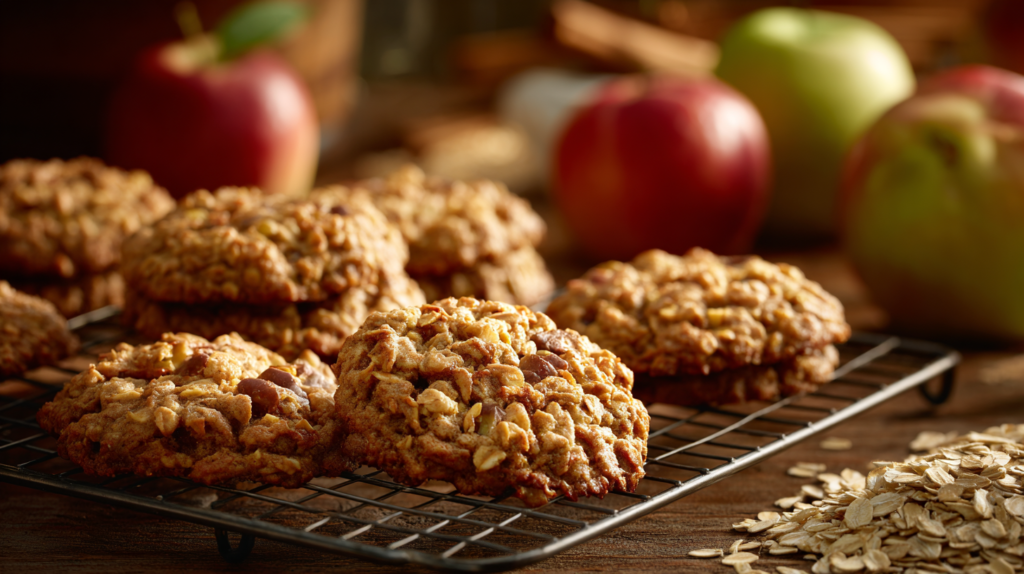
These hearty homemade dog treats provide excellent fiber from both apples and oats, making them great for digestive health.
Ingredients:
- 1½ cups quick-cooking oats
- 1½ cups whole wheat flour
- 1 apple, cored and grated (avoid seeds)
- 1 egg
- ½ cup unsweetened applesauce
- ⅓ cup water
Instructions:
- Preheat your oven to 350°F (175°C) and line a baking sheet with parchment paper.
- In a large bowl, combine oats and flour.
- Add grated apple, applesauce, egg, and water. Mix until well combined.
- Drop spoonfuls of dough onto the prepared baking sheet, or roll out and cut with cookie cutters.
- Slightly flatten each cookie with the back of a spoon.
- Bake for 20-25 minutes until golden and firm.
- Allow to cool completely before serving.
Nutritional Benefits:
- Oats: Provide soluble fiber and help maintain steady blood glucose levels
- Apples: Rich in pectin, a soluble fiber that aids digestion (remember to remove all seeds)
- Whole Wheat Flour: Offers complex carbohydrates and additional fiber
- Applesauce: Adds moisture and natural sweetness without added sugars
Storage:
Store in an airtight container for up to 1 week at room temperature or freeze for up to 3 months.
Expert Insight:
“The combination of soluble fiber from oats and insoluble fiber from apples makes these treats particularly beneficial for dogs with sensitive digestive systems,” says Dr. Amanda Chen, veterinary gastroenterologist.
Recipe #6: Beef Liver Training Bites
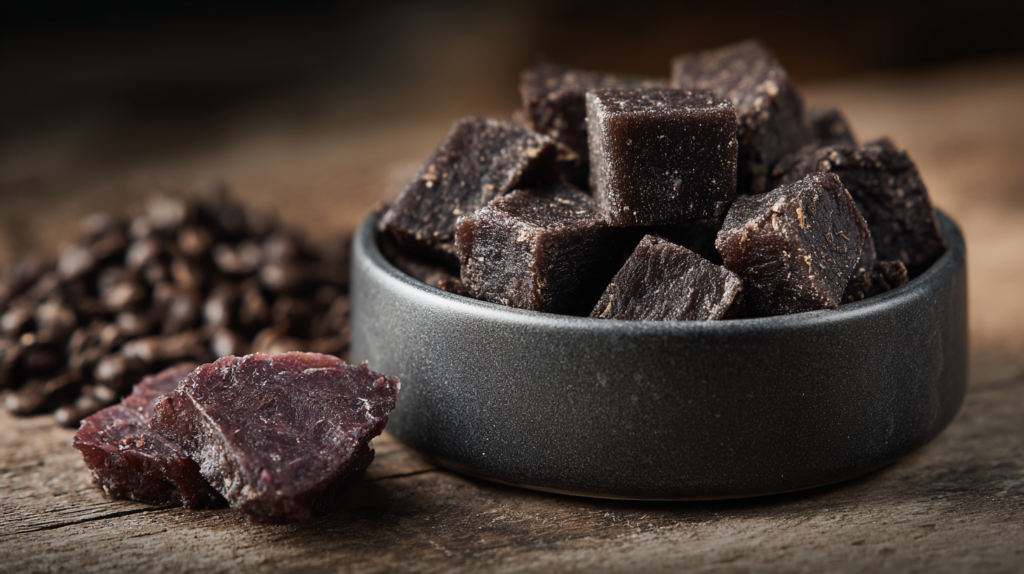
These high-value homemade dog treats have an irresistible aroma and taste that makes them perfect for training even the most distracted dogs.
Ingredients:
- 1 pound beef liver
- 2 eggs
- 1 cup whole wheat flour
- ¼ cup water
- 1 tablespoon olive oil
Instructions:
- Preheat your oven to 350°F (175°C) and line a baking sheet with parchment paper.
- Cut the liver into chunks and place in a food processor.
- Add eggs, olive oil, and water to the processor and blend until smooth.
- Transfer the mixture to a bowl and gradually mix in the flour until well combined.
- Spread the mixture onto the prepared baking sheet in a thin, even layer (about ¼-inch thick).
- Bake for 20 minutes, or until the center is firm to touch.
- Allow to cool, then cut into small, pea-sized squares for training.
Nutritional Benefits:
- Beef Liver: Extremely rich in vitamin A, iron, copper, zinc, and essential fatty acids
- Eggs: Provide high-quality protein and biotin
- Whole Wheat Flour: Adds fiber and helps bind the treats
Storage:
Refrigerate for up to 5 days or freeze for up to 3 months.
Important Note:
While liver is incredibly nutritious, it should be fed in moderation due to its high vitamin A content. Too much vitamin A can lead to hypervitaminosis A in dogs. These treats should constitute no more than 5-10% of your dog’s diet.
Recipe #7: Salmon & Sweet Potato Biscuits

These omega-rich homemade dog treats support skin, coat, and joint health while providing an enticing flavor that most dogs can’t resist.
Ingredients:
- 1 can (14.75 oz) pink salmon, drained (with bones removed)
- 1 medium sweet potato, cooked and mashed
- 2 eggs
- 2½ cups whole wheat flour
- 1 tablespoon fresh dill or parsley, finely chopped (optional)
Instructions:
- Preheat your oven to 350°F (175°C) and line two baking sheets with parchment paper.
- In a large bowl, flake the salmon with a fork, ensuring all bones are removed.
- Add the mashed sweet potato, eggs, and herbs (if using) and mix well.
- Gradually add the flour, mixing until a slightly sticky dough forms.
- Turn the dough onto a floured surface and knead briefly.
- Roll the dough to about ¼-inch thickness and cut into desired shapes.
- Place treats on prepared baking sheets.
- Bake for 20-25 minutes until edges are golden.
- For crispier treats, turn off the oven after baking and leave treats inside as the oven cools.
- Cool completely before serving.
Nutritional Benefits:
- Salmon: Excellent source of omega-3 fatty acids for skin, coat, and joint health
- Sweet Potato: Provides beta-carotene, fiber, and complex carbohydrates
- Fresh Herbs: Contain antioxidants and can freshen breath
Storage:
Keep in an airtight container in the refrigerator for up to 1 week or freeze for up to 3 months.
Veterinarian’s Note:
Dr. Michael Thompson, DVM, explains: “The omega-3 fatty acids in salmon can help reduce inflammation in dogs with arthritis or allergies, while supporting brain health and cognitive function in aging pets.”
Tips for Making Homemade Dog Treats
Adjusting Recipes for Dogs with Special Dietary Needs
For Dogs with Grain Sensitivities:
- Substitute whole wheat flour with alternatives like:
- Coconut flour (use 1/4 the amount as it’s highly absorbent)
- Chickpea flour (use 3/4 the amount)
- Almond flour (use equal amounts)
- Oat flour (use equal amounts if oats are tolerated)
For Dogs with Protein Allergies:
- Common dog food allergens include beef, dairy, chicken, and egg
- Consider novel protein sources like turkey, duck, or venison
- Always introduce new ingredients gradually and watch for reactions
For Overweight Dogs:
- Reduce fat content by using lean meats
- Incorporate vegetables for bulk with fewer calories
- Make treats smaller to control portions
- Use fruits like apples and berries for natural sweetness instead of honey
For Senior Dogs:
- Include anti-inflammatory ingredients like turmeric (small amounts)
- Add glucosamine-rich ingredients like bone broth
- Ensure treats are softer and easier to chew
- Include omega-3 sources for cognitive health
Proper Storage of Homemade Dog Treats
The shelf life of homemade dog treats varies significantly based on the ingredients and preparation method:
| Type of Treat | Room Temperature | Refrigerator | Freezer |
| Baked biscuits (low moisture) | 1-2 weeks | 2-3 weeks | 3-6 months |
| Soft treats (higher moisture) | 2-3 days | 7-10 days | 2-3 months |
| Meat-based treats | Not recommended | 3-5 days | 2-3 months |
| Frozen treats | Not applicable | Not recommended | 3 months |
Signs That Homemade Dog Treats Have Gone Bad:
- Visible mold growth
- Off or sour smell
- Change in color
- Unusual texture (sliminess)
- Excessive hardness
Portion Control Guidelines
Even healthy homemade dog treats should be given in moderation. As a general rule, treats should constitute no more than 10% of your dog’s daily caloric intake.
Here’s a quick reference chart based on dog size:
| Dog Size | Weight Range | Daily Treat Allowance |
| Toy | Under 10 lbs | 2-3 small treats |
| Small | 10-20 lbs | 3-5 small treats |
| Medium | 20-50 lbs | 5-8 small treats |
| Large | 50-90 lbs | 8-10 small treats |
| Giant | Over 90 lbs | 10-15 small treats |
Remember that these guidelines may need adjustment based on your dog’s activity level, age, and health conditions. Always consult with your veterinarian about appropriate treat quantities, especially for dogs with health issues.
Safety Considerations When Making Homemade Dog Treats
Cross-Contamination Prevention
When preparing homemade dog treats, especially those containing raw meat, practice the same food safety measures you would for human food:
- Wash hands thoroughly before and after handling ingredients
- Clean and sanitize all surfaces, utensils, and equipment
- Use separate cutting boards for meat and produce
- Cook meat thoroughly to kill harmful bacteria
Avoiding Toxic Ingredients
Many human foods are toxic to dogs. Always double-check ingredient safety before incorporating new items into your homemade dog treats:
- No chocolate or cocoa products
- No xylitol (found in many peanut butters and other products)
- No grapes or raisins
- No onions or garlic
- No macadamia nuts
- No alcohol, even in small amounts
Consulting with Your Veterinarian
Before making significant changes to your dog’s diet, including introducing homemade treats, consult with your veterinarian, especially if your dog:
- Has existing health conditions
- Takes medications that might interact with certain foods
- Has shown food sensitivities in the past
- Is very young, very old, or pregnant
According to the American Veterinary Medical Association, dietary changes, even just treats, can sometimes impact medication efficacy or exacerbate certain conditions.
The Future of Homemade Dog Treats: Emerging Trends
The landscape of pet nutrition is constantly evolving, with several emerging trends that are shaping the future of homemade dog treats:
Functional Ingredients
More pet owners are incorporating functional ingredients with specific health benefits into their homemade dog treats:
- CBD and hemp products – For anxiety relief and pain management
- Adaptogens – Such as ashwagandha and medicinal mushrooms for immune support
- Insect protein – Sustainable alternative protein sources with lower environmental impact
- Fermented ingredients – For enhanced probiotic benefits and digestibility
Sustainability and Eco-Conscious Choices
Environmental awareness is influencing homemade dog treat preparation:
- Using locally sourced, seasonal ingredients
- Incorporating food scraps that would otherwise be wasted (like carrot tops or broccoli stems)
- Choosing ingredients with lower carbon footprints
- Using biodegradable or compostable packaging for storage
Tech-Enhanced Preparation
Technology is making homemade dog treat preparation easier and more precise:
- Smart kitchen appliances with pet food settings
- Apps that calculate nutritional profiles of homemade treats
- 3D food printers capable of creating custom-shaped treats
- Subscription services for pre-portioned, fresh homemade dog treat ingredients
For example, the PetNutri app (launched in 2023) analyzes your recipes and provides nutritional breakdowns specifically calibrated for dogs rather than humans.
Common Questions About Homemade Dog Treats
For those new to making homemade dog treats, here are answers to some frequently asked questions:
How long do homemade dog treats last? Depending on moisture content and ingredients, homemade dog treats typically last 1-2 weeks at room temperature in an airtight container, 2-3 weeks in the refrigerator, and 2-6 months in the freezer. Always check for signs of spoilage before giving treats to your dog.
Can I substitute ingredients in homemade dog treat recipes? Yes, most recipes allow for substitutions, but research any new ingredient to ensure it’s safe for dogs. For example, you can substitute pumpkin for sweet potato, or use different types of flour based on your dog’s dietary needs.
How do I know if my dog is allergic to an ingredient? When introducing new homemade dog treats, watch for signs like itching, ear infections, skin redness, gastrointestinal upset, or excessive paw licking. If you notice these symptoms, discontinue the treats and consult your veterinarian.
Are homemade dog treats healthier than store-bought? Not always. The quality depends on your ingredients and preparation methods. However, homemade treats allow you to avoid preservatives, artificial colors, and flavors often found in commercial options. You can also tailor homemade treats to your dog’s specific dietary needs.
Can puppies eat homemade dog treats? Yes, but treats should be appropriate for their age and size. Puppies have different nutritional needs and more sensitive digestive systems than adult dogs. Use softer ingredients and smaller portions, and always consult with your veterinarian.
How many homemade dog treats can I give my dog per day? Treats should constitute no more than 10% of your dog’s daily caloric intake. The exact number depends on your dog’s size, age, activity level, and the caloric content of the treats. When in doubt, consult with your veterinarian for personalized guidance.
For more expert pet care tips and product recommendations, visit BlithePet.com — your trusted source for pet wellness.
Conclusion
Creating homemade dog treats is a rewarding way to provide your four-legged family member with nutritious, tailored snacks while knowing exactly what ingredients they’re consuming. From peanut butter pumpkin biscuits to frozen yogurt bites, these seven easy recipes offer a variety of options to suit different preferences and dietary needs.
By making homemade dog treats, you’re not just providing your dog with delicious rewards—you’re investing in their health and well-being while strengthening your bond through the act of preparing something special just for them. Remember to store treats properly, practice portion control, and always consult with your veterinarian if you have questions about specific ingredients or your dog’s dietary needs.
We hope these recipes inspire you to get creative in the kitchen and discover the joy of making homemade dog treats for your beloved pet. Your dog will certainly appreciate the extra effort and love that goes into each homemade morsel.
Have a similar experience with your pet? Share it in the comments below!



